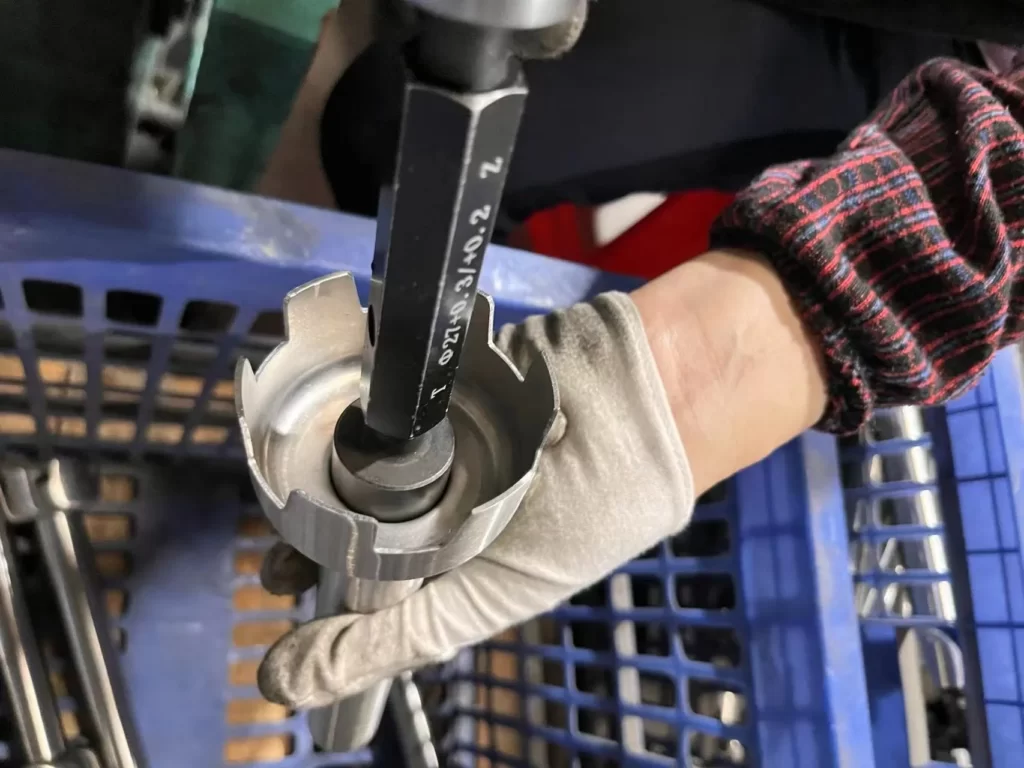Have you ever wondered about the intricacies of everyday objects? Consider your hand blender, a simple kitchen gadget that we often take for granted. But have you ever wondered how your hand mixer works so smoothly, or why the stirring shaft fits so perfectly? Have you ever pondered the process behind the manufacturing of a stirring shaft? Or why it’s so important that the shaft maintains perfect roundness?

The roundness of the stainless steel stirring shaft is critical for the smooth and quiet operation of your hand blender. Tube expansion is a vital process in ensuring the optimal performance and durability of our hand mixers.
Why Is Roundness So Important for Stirring Shafts?
Roundness might seem like a minor detail, but it’s actually a major factor in the performance of your hand blender. The stirring shaft’s perfect roundness ensures that your blender operates smoothly and quietly. Any deviation can cause imbalances, vibrations, or even damage the blender’s motor.
In manufacturing, a strict 0.2mm tolerance for roundness is generally accepted. This standard is crucial because it guarantees the efficiency of the hand blender and enhances its lifespan.
How Do We Measure the Roundness of a Stirring Shaft?

To ensure that a stirring shaft meets the 0.2mm roundness tolerance, we use a tool called a Go-and-no-go gauge. This gauge is used to measure the circular diameter tolerance of the shaft. If the gauge cannot pass through the shaft, it indicates that the shaft needs adjustment. This gauge is a significant tool in maintaining quality control and ensuring the stirring shaft meets the required standards.
Why Do Deformities Occur and Need Tube Expansion?
During manufacturing, deformities can occur due to processes like rolling and laser welding. These deformities can distort the roundness of the stirring shaft, pushing it beyond the acceptable tolerance. That’s where tube expansion comes in.
Tube expansion is a mechanical process that corrects these deformities. A high-hardness tungsten steel bead is placed at the bottom of the shaft, and a hydraulic press pushes the bead into the shaft. A tool wooden rod is then methodically pushed from the top of the stirring shaft, extruding the tungsten steel bead. This process expands the tube of the stirring shaft, correcting the roundness and ensuring that the stirring shaft stays within the strict 0.2mm tolerance.
But how does the tube expansion process work?
Tube expansion might be used to ensure a tight fit between the shaft and any attached components, such as impellers, blades, or other stirring elements. The process can be carried out using various methods, such as hydraulic expansion, mechanical expansion, or heat expansion.
- Hydraulic Expansion: This method uses pressurized fluid to expand the tube from the inside. The tube is sealed at one end, and fluid is pumped into the tube until the pressure inside causes the tube to expand and fit onto the shaft. This method is generally controlled and uniform, making it suitable for precision applications.
- Mechanical Expansion: In this process, a tool called a mandrel is inserted into the tube and then mechanically forced to expand, causing the tube to stretch and increase in diameter. This method can provide a high degree of control over the expansion process. This is also the method we used in tube expansion of the stirring shaft.
- Heat Expansion: This method involves heating the tube to increase its diameter. As the tube heats up, it expands. Once it has expanded enough to fit over the shaft, it’s cooled, causing it to contract and form a tight fit. This method is often used for permanent assembly, as the contraction of the tube can create a very tight bond.



How Do We Confirm the Precision of the Tube Expansion Process?



Once the tube expansion process is complete, it’s essential to recheck the stirring shaft with the Go-and-no-go gauge. This post-expansion check ensures that the stirring shaft now falls within the correct tolerance. If the gauge now passes correctly, it indicates that the tube expansion process has been successful, and the stirring shaft is ready for assembly into the hand blender.
Is this process unique to Bonray?
While the tube expansion process is standard in the manufacturing of stirring shafts, what sets Bonray apart is our meticulous attention to detail, our adherence to high standards, and our commitment to producing top-quality products. This commitment to excellence is what makes us a preferred choice for our target clients.
Conclusion
The tube expansion process directly impacts the quality of the stirring shaft, and in turn, the overall performance of the hand mixer. By maintaining the shaft’s roundness, it ensures a smooth and quiet operation of the hand mixer. Furthermore, it also helps in meeting the stringent quality control standards that we at Bonray pride ourselves on.
It is a prime example of our commitment to perfection at Bonray. It may seem like a small process in the grand scheme of things, but it is one that carries significant weight in ensuring the quality and performance of our products. We go the extra mile, quite literally in terms of millimeters, to ensure that our products exceed the expectations of our clients. After all, as we often say at Bonray, “Perfection is in the details.”
